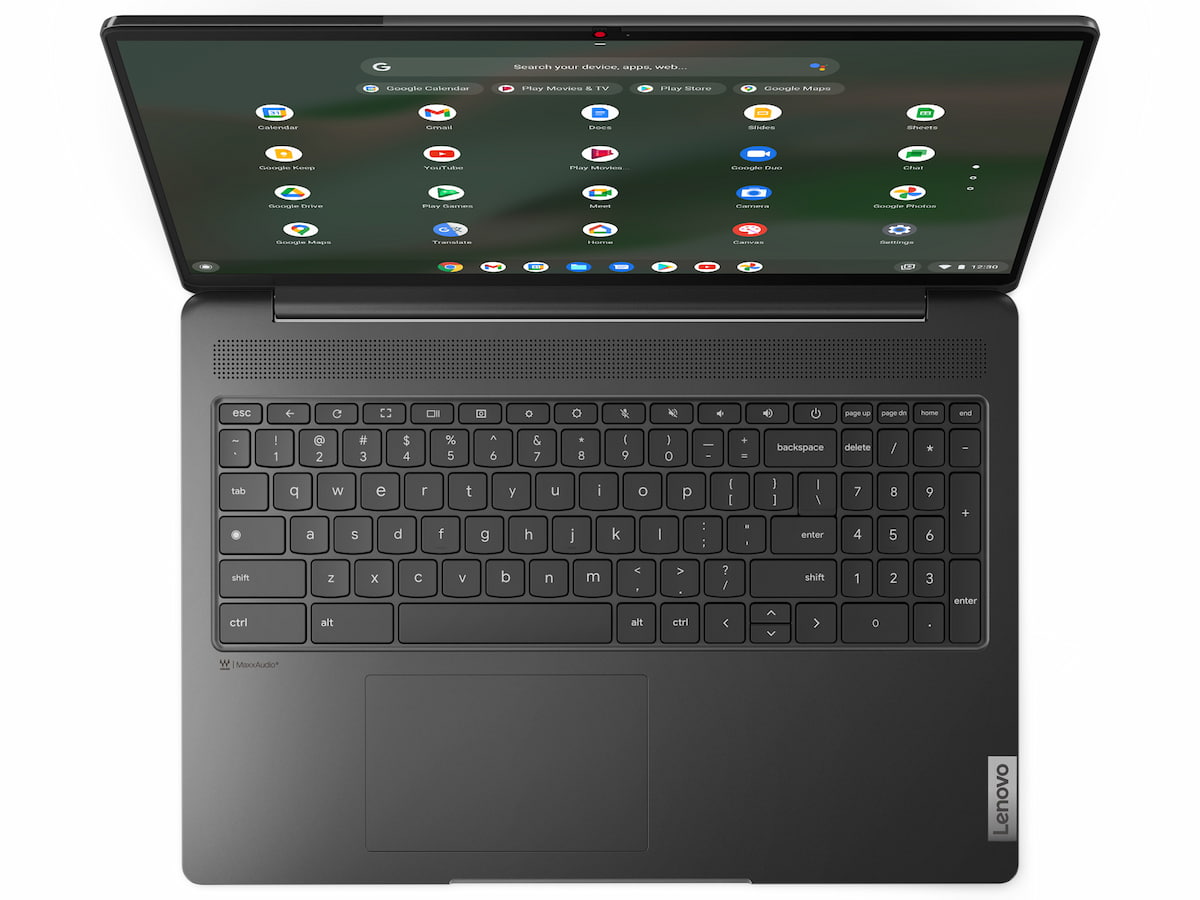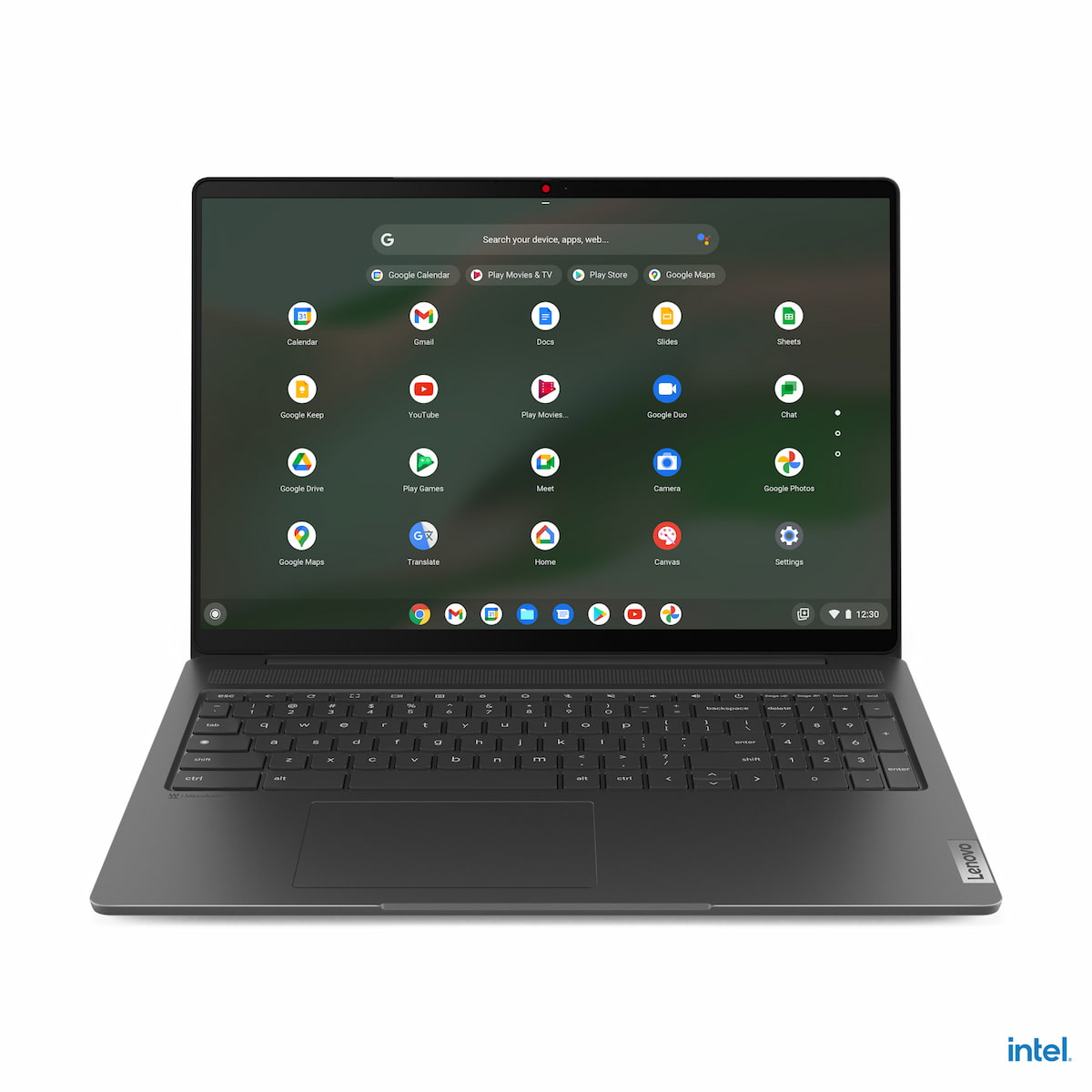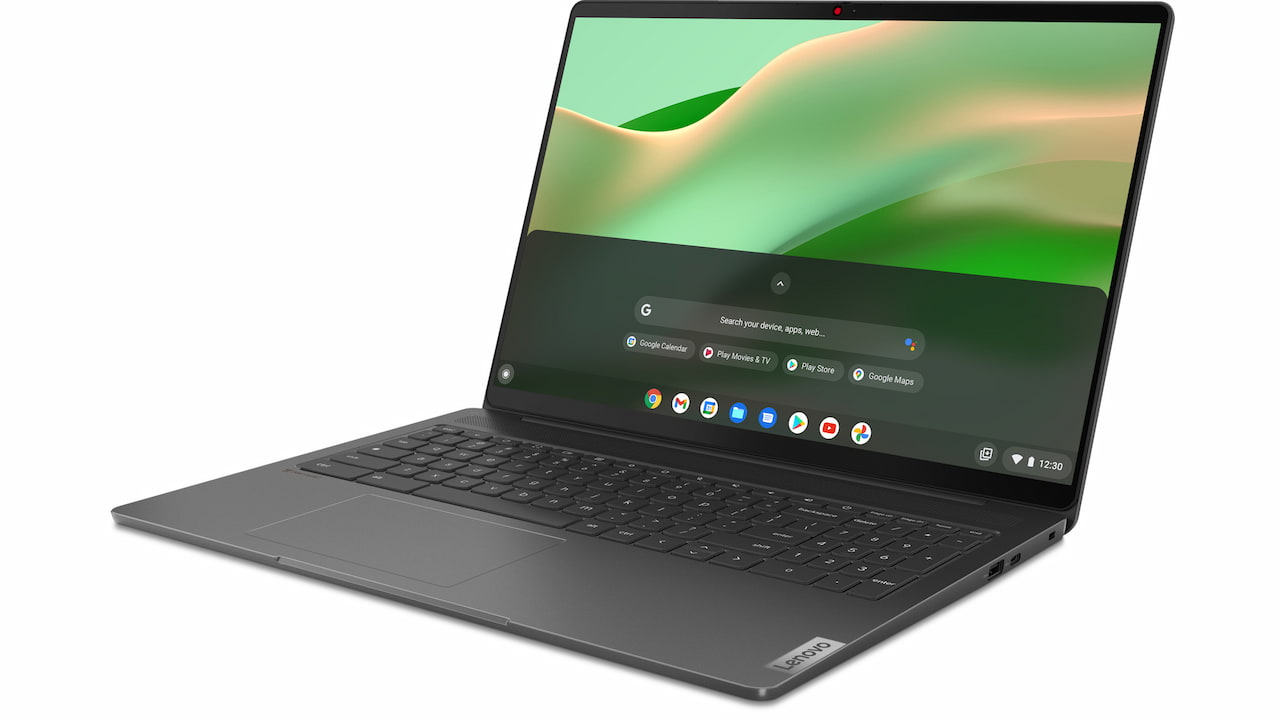On Thursday at the IFA show in Berlin, Lenovo introduced its new IdeaPad 5i Chromebook. This is an update from the previous 5i Chromebook, which I still think is a great value. The new model is Lenovo’s first 16-inch Chromebook, so the display gets upsized. And unlike most Chromebooks, this screen refreshes up to 120 times per second.
Normally, displays with a fast refresh rate are meant for gaming. Based on the hardware specifications, the Lenovo IdeaPad 5i Chromebook isn’t, however. I doubt, for example, it will support Steam gaming on Chromebooks given either the 12th-gen Intel Pentium or Core i3 processors. Still, the display can modify its refresh rate faster or slower for a smoother viewing experience. That’s likely through the variable refresh rate experimental flag I reported back in March.
Given the display size, which has a 2.5K resolution, there’s more room on Lenovo’s first 16-inch Chromebook chassis for a number pad and generously sized glass trackpad.

Here are the full specs:
| CPU | Intel Pentium 8505 or Intel Core i3-1215U |
| GPU | Intel UHD Graphics for the Pentium, likely Iris Xe for the i3 (not specified) |
| Display | 16″, 2.5K, 16:10 aspect ratio, 100% sRGB, 350 nits IPS , up to 120 Hz or 16″ FullHD, 16:10 aspect ration, 45% NTSC, 300 nits, 60Hz IPS |
| Memory | 4 / 8 GB LPDDR4X memory |
| Storage | 64 /128 GB eMMC or 256 / 512 GB SSD |
| Connectivity | 802.11ax (2×2) WiFi 6E, Bluetooth 5.0 |
| Input | Backlit keyboard, multitouch trackpad 1080p webcam with privacy shutter, dual-array microphone |
| Ports | 2 USB Type-C Gen 3.2, 2 USB Type-A Gen 3.2 ports, microSD card reader, headphone/microphone combo jack |
| Battery | Up to 12-hour claimed run time |
| Weight | 4.1 pounds |
| Software | ChromeOS automatic updates through June 2030 |

Lenovo seems to be going after the education market here as well as consumers based on some hardware omissions. There’s no fingerprint sensor or an HDMI port, for example. And as mentioned, the processor choices are more geared toward the everyday Chromebook users looking for a large screened device.
U.S. pricing and availability haven’t been announced, but Lenovo’s first 16-inch Chromebook arrives in September for €549 in the EU. I’d expect similar pricing in dollars if the IdeaPad 5i Chromebook arrives here.



2 Comments
Got excited when Acer and Asus introduced the first 17″ Chromebooks last year … till I saw that they had Pentium and Celeron CPUs. Likewise was happy over seeing a 16″ with 120 Hz refresh rate … until Lenovo decided that Pentium and Core i3 CPUs were good enough.
Better news: Lenovo is also giving ChromeOS another shot on ThinkCentre desktops after 7 long years. And it comes with up to a 12th Gen Intel Core i5, plus 2 DDR4 SODIMM 3200MHz slots (meaning expandable up to 32 GB RAM). Also, ThinkCentre devices usually have at least one M.2 port for an SSD. So after all the OEMs used the chip shortage as an excuse not to come out with a single 11th gen Intel Chromebox – CTL actually released a 10th gen one last year – we are getting an Alder Lake Core i5 from Lenovo.
Bad news: back in 2020 Lenovo promised that 5G ChromeOS tablets were “coming soon.” Granted the chip shortage derailed those plans but 2 years later: nothing. Instead today they announce a $250 Android tablet on hardware that could easily accommodate ChromeOS (up to 6 GB RAM with 64 GB to 128 GB of storage, 11.5″ 120 Hz screen).
Used to be that Celeron/Pentium processors had much slower cores than the Core i_ models. That’s only barely true now. There are, of course, other feature differences, but the number of cores and the multiprocessing possible because of them means far less for the individual doing basic things. With 11th gen and even more so 12th gen the Celeron/Pentium processors don’t feel even a little sluggish unless you’re running apps that require more than a few cores.